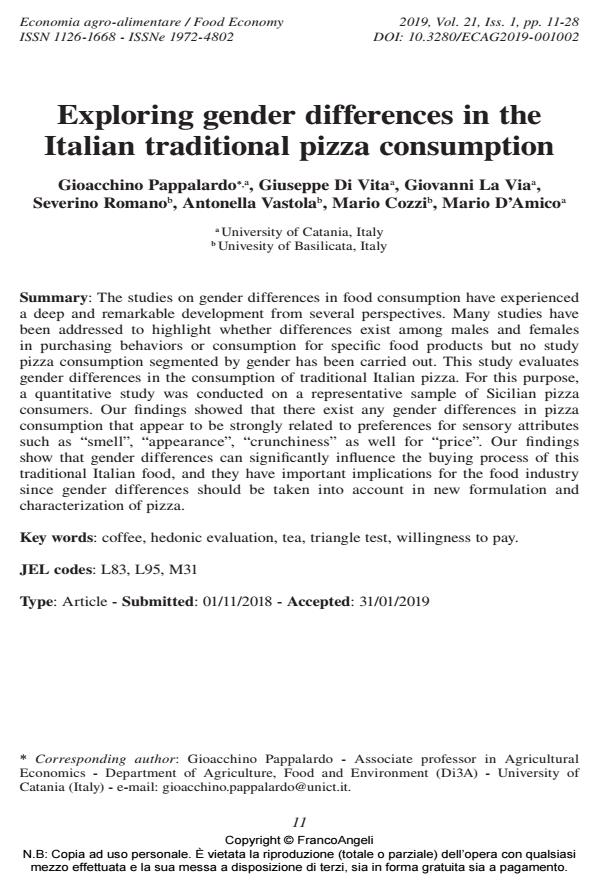Exploring gender differences in the Italian traditional pizza consumption
Titolo Rivista ECONOMIA AGRO-ALIMENTARE
Autori/Curatori Gioacchino Pappalardo, Giuseppe Di Vita, Giovanni La Via, Severino Romano, Antonella Vastola, Mario Cozzi, Mario D’Amico
Anno di pubblicazione 2019 Fascicolo 2019/1
Lingua Inglese Numero pagine 18 P. 11-28 Dimensione file 151 KB
DOI 10.3280/ECAG2019-001002
Il DOI è il codice a barre della proprietà intellettuale: per saperne di più
clicca qui
Qui sotto puoi vedere in anteprima la prima pagina di questo articolo.
Se questo articolo ti interessa, lo puoi acquistare (e scaricare in formato pdf) seguendo le facili indicazioni per acquistare il download credit. Acquista Download Credits per scaricare questo Articolo in formato PDF

FrancoAngeli è membro della Publishers International Linking Association, Inc (PILA)associazione indipendente e non profit per facilitare (attraverso i servizi tecnologici implementati da CrossRef.org) l’accesso degli studiosi ai contenuti digitali nelle pubblicazioni professionali e scientifiche
The studies on gender differences in food consumption have experienced a deep and remarkable development from several perspectives. Many studies have been addressed to highlight whether differences exist among males and females in purchasing behaviors or consumption for specific food products but no study pizza consumption segmented by gender has been carried out. This study evaluates gender differences in the consumption of traditional Italian pizza. For this purpose, a quantitative study was conducted on a representative sample of Sicilian pizza consumers. Our findings showed that there exist any gender differences in pizza consumption that appear to be strongly related to preferences for sensory attributes such as "smell", "appearance", "crunchiness" as well for "price". Our findings show that gender differences can significantly influence the buying process of this traditional Italian food, and they have important implications for the food industry since gender differences should be taken into account in new formulation and characterization of pizza.
Parole chiave:Coffee, hedonic evaluation, tea, triangle test, willingness to pay.
Jel codes:L83, L95, M31
- Harmful Compounds and Willingness to Buy for Reduced-Additives Salami. An Outlook on Italian Consumers Giuseppe Di Vita, Simone Blanc, Teresina Mancuso, Stefano Massaglia, Giovanni La Via, Mario D’Amico, in International Journal of Environmental Research and Public Health /2019 pp.2605
DOI: 10.3390/ijerph16142605
Gioacchino Pappalardo, Giuseppe Di Vita, Giovanni La Via, Severino Romano, Antonella Vastola, Mario Cozzi, Mario D’Amico, Exploring gender differences in the Italian traditional pizza consumption in "ECONOMIA AGRO-ALIMENTARE" 1/2019, pp 11-28, DOI: 10.3280/ECAG2019-001002